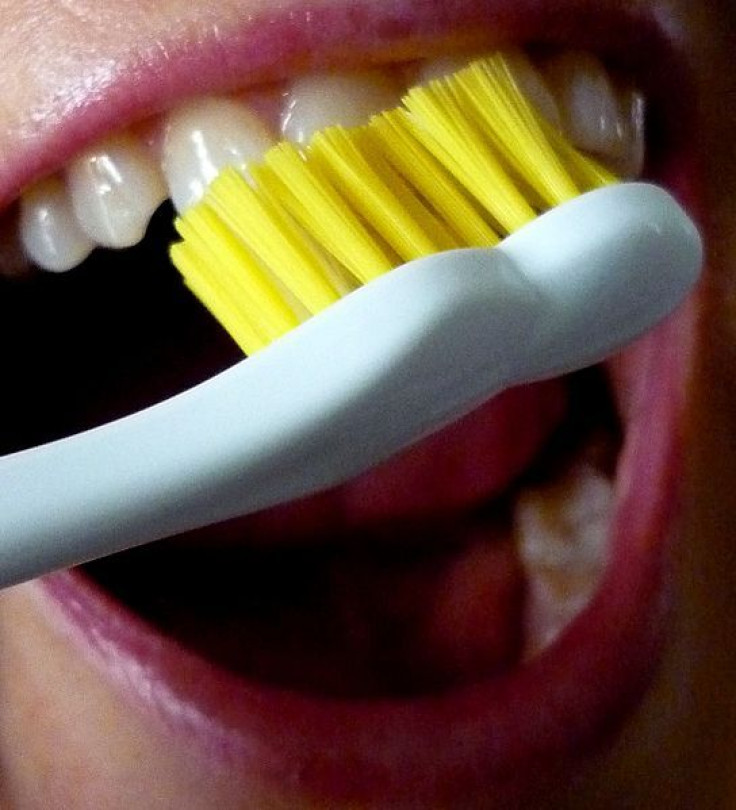Colgate Files Patent for Caffeine-Infused Toothbrush

Ever wish you could get your morning caffeine while brushing your teeth? Colgate-Palmolive may have the answer. The company recently filed for a patent for a toothbrush "that releases a chemical into the mouth during use" in order to "enhance a user's brushing experience."
One iteration of the wonder toothbrush the company is planning, says the UK's Daily Mail, would have a built-in caffeine patch that could deliver the chemical through the toothbrush bristles and into the gums, cheeks, and tongue as you brush your teeth. In its patent application, Colgate-Palmolive says it could even deliver chemicals that produce a sensory effect, like capsaicin, a flavor, or even medication, pain killers, or appetite suppressants.
Each patch would last three months, the Daily Mail says. The company has also added a tongue cleaner with the same technology to the patent.
The different flavors and sensory chemicals would be delineated by differently shaped patches on the back of the toothbrush, Colgate-Palmolive says, like a mint leaf for the mint-flavored brush or a flame for the capsaicin brush. But the company may run into some problems getting approval for this invention, suggests Motherboard.
"While Colgate could not be reached for comment about the potential for bringing the product to market, it shows startling innovation for a company selling a dental-cleaning implement that has gone conceptually unchanged for more than 500 years," the site says. "But this innovation comes at a turbulent time for the 'caffeinate everything' movement. Wrigley just announced that it would be pulling their new 'Alert' caffeine gum off the market until the FDA has some time to do its research, and the agency has so far not provided any timeline for a ruling, if there will even be one."
Though the FDA hasn't said anything about the caffeine toothbrush yet, deputy commissioner Michael Taylor recently warned against the caffeinate-everything trend, Motherboard says, and the agency plans to study the effect of so much readily available caffeine on adolescents.



























